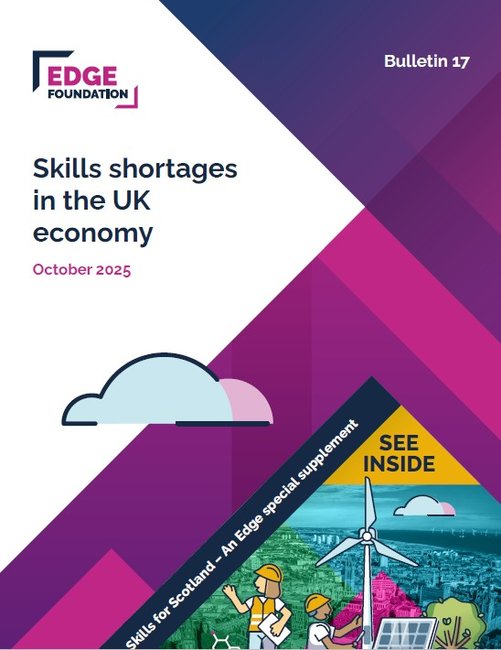Our seventeenth Skills Shortage Bulletin considers the changing nature of UK skills shortages, the limitations of the system in addressing these changes, and the impact on the group most vulnerable to labour market instability – young people. With NEETs (young people not in education, employment or training) at almost a record high, the focus is on how to get these young people into work.
The Department for Education’s Employer Skills Survey 2024 shows a return to many pre-pandemic norms. Skills shortage vacancies have dropped to 2017 levels. The majority of vacancies are in the construction sector – a priority area to address if the Government wishes to meet its target of building 1.5 million homes. Open University’s Business Barometer 2025 suggests skills challenges are evolving rather than abating. 40% of businesses say staff are carrying heavier workloads, with 30% delaying or abandoning expansion plans due to shortages. Meanwhile, 71% of Gen Z adults (18-24) select career paths based on skills needs, but only 33% of organisations have initiatives to recruit, train or retain this age group, leaving motivated young talent on the sidelines.

The Skills and Employment Survey 2024 (Wales Institute of Social and Economic Research and Data) identifies a rise in labour market demand for literacy and digital skills. However, increasing use of AI has also led to a decline in the use of skills such as client communication. The National Foundation for Educational Research projects up to three million jobs at risk by 2035, with tech, environmental and demographic changes driving a rise in higher-skilled occupations. To avoid widening social inequality, there is a clear imperative to support the transition of those currently in lower and mid-skilled occupations into new roles. Research from Edge and Dr Gerbrand Tholen, City St. George’s University of London, highlights the phenomenon of job polarisation – an expansion of high-skill roles like engineering, as well as of lower-paid roles like social care, which rely on skills difficult to automate. So-called ‘middle roles’, such as administrative work, which are often assumed to be at risk from automation, may be evolving, not disappearing.
Youth Employment UK’s Youth Voice Census reveals key gaps around young people’s skills confidence, skills awareness and work experience. A third of young people are also disengaged from education or employment, with greater inequalities for those with additional needs or from disadvantaged backgrounds. Only 49% of young people know what skills employers want, with this figure dropping to 26% for NEETs. Impetus’ Youth Jobs Gap report further highlights the complex intersectionality of NEET with geography, ethnicity, and special educational needs (SEND). SEND young people, who are also minimally qualified and come from disadvantaged backgrounds, are nearly three times more likely to be NEET than average. Impetus estimates that tackling this issue could save up to £69 billion in lost GDP.

Are employers stepping up, and if not, why not? The Learning and Work Institute calls for improved planning from policymakers, arguing that a narrow focus on skills for jobs – rather than learning for life – has led to policies that disengage or perversely incentivise employers. Neither volunteerism (such as involvement in apprenticeship design) nor compulsory interventions (such as the Levy) effectively tackle the underlying reasons for low employer investment in skills. Greater ambition is needed.
Finally, the Institute for Public Policy Research highlights a 40% drop in entry-level apprenticeships, with growth instead focused on higher-level positions. Most entry-level apprenticeships, internships and other roles now have prohibitively high entry requirements, negatively impacting young people’s skills development, employment prospects, mental health and financial stability. This ultimately compounds inequality, especially for those from disadvantaged backgrounds. IPPR recommend replacing the Apprenticeship Levy with a Growth and Skills Levy, ring-fencing half of this for under-25s, with a quarter specifically for under-21s. They also suggest tackling financial barriers with interest-free maintenance loans.


